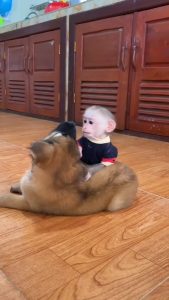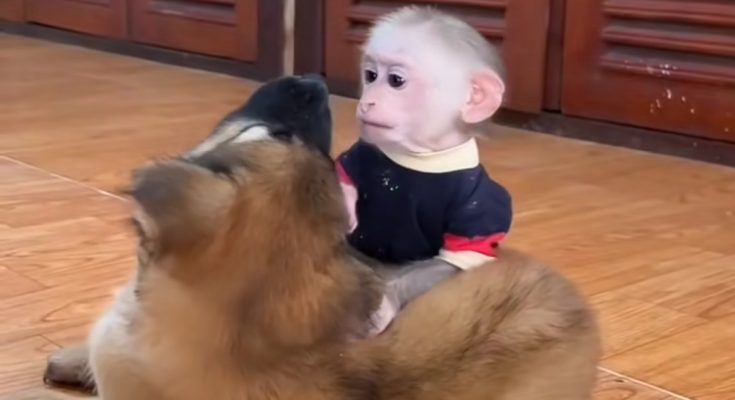
In a peaceful little village on the edge of the forest, a playful brown puppy named Nino lived with his human family. Nino had floppy ears, a wagging tail that never seemed to stop, and a heart full of curiosity. He loved chasing butterflies, digging little holes in the garden, and rolling around in the grass. Everyone in the village adored him. But there was one thing about Nino that puzzled people—he didn’t like the monkey.
The monkey’s name was Tiki. She was a young, cheeky monkey who had wandered into the village from the nearby forest. The villagers took her in, gave her fruits, and built her a small wooden platform to rest on. Tiki was smart, quick, and full of mischief. Children laughed at her silly tricks, and the adults enjoyed watching her climb trees and swing from ropes they had tied for her.
But Nino didn’t find Tiki funny. In fact, from the very first day they met, the puppy growled softly and barked when she came near. He would hide behind the water jar or sit far away with his ears down and his eyes wary. No matter how much Tiki tried to play or come closer, Nino didn’t trust her.
Why didn’t the puppy like the monkey?



